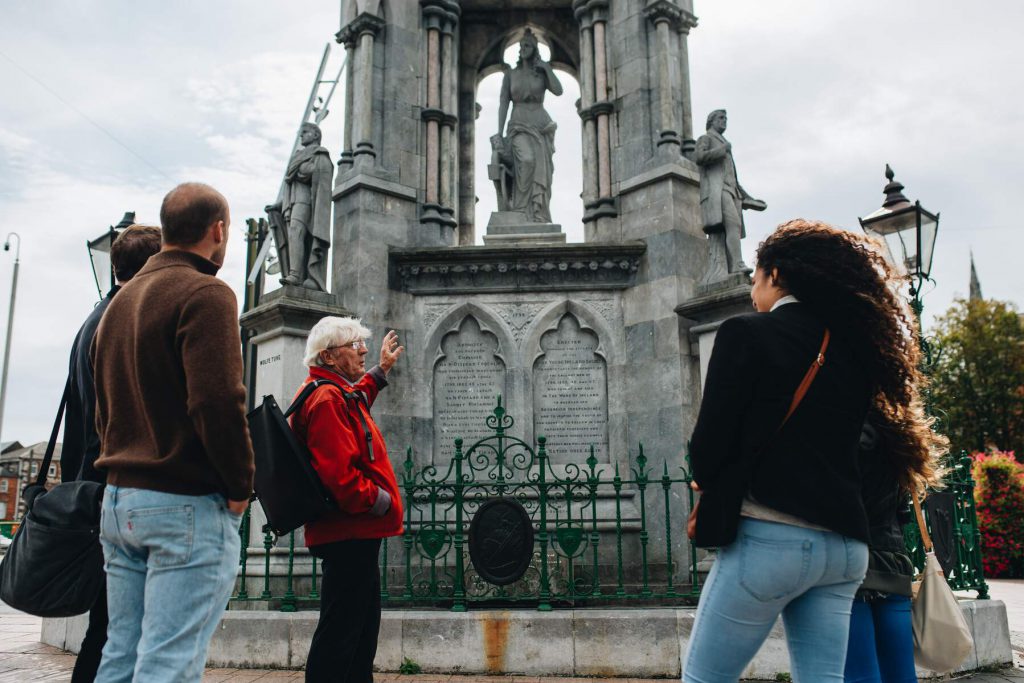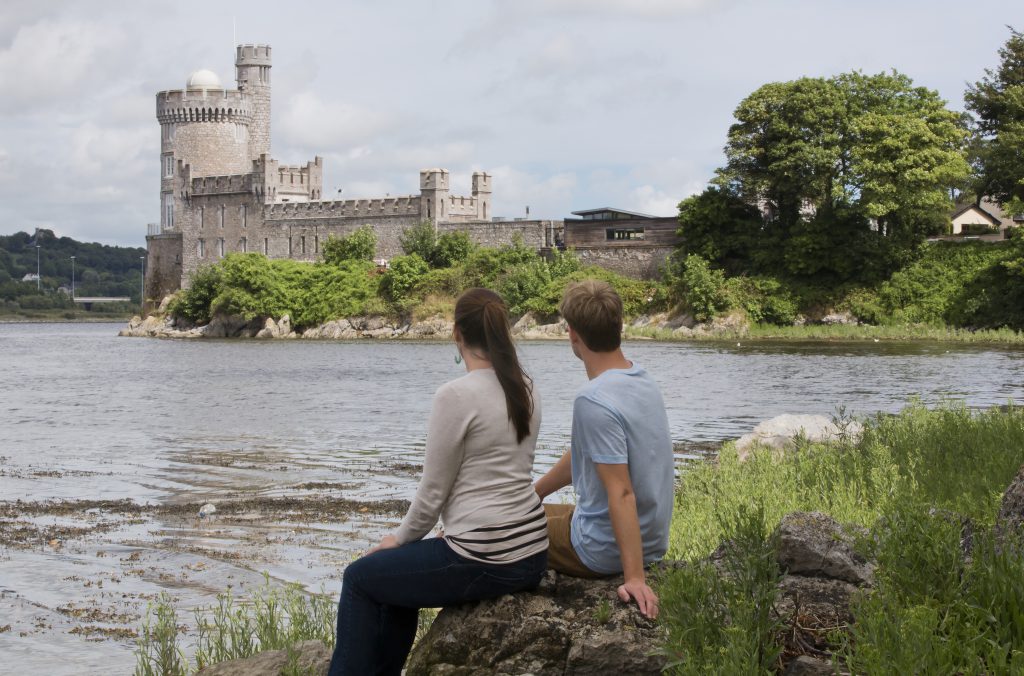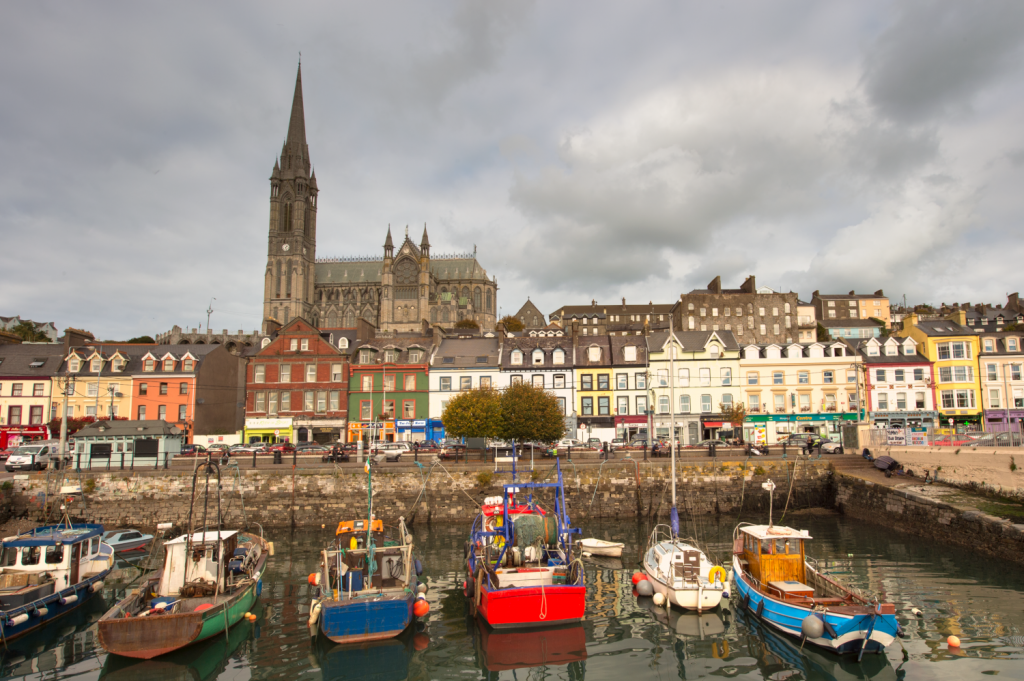
By Barry Coughlan
The Pandemic that still lingers came to test everyone and some more than most. That was, and probably still is, hugely evident in the travel, tourism and hospitality industries.
There are the survivors of course, but no business has been unaffected; some have collapsed but others have had to change and alter direction.
The survivors, even allowing for relatively decent financial intervention by the Irish Government, had to adapt and think outside the box.
So too had city and county councils throughout the country to come up with plans to keep the ships of industry and hospitality afloat.
The city center of Cork is a case in point where there is now, even allowing for the worrying sight of the occasional boarded up building, increasing evidence of transformation to a continental style vibe.
Some streets or footpaths (sidewalks) have changed usage to include outdoor eating facilities, complete with the necessary heating and cover protection options. We do live in an area that has a mild oceanic climate (changeable with abundant rainfall being a part- description of that!)
Now the hope is that the City Fathers will allow more such developments without nasty charges imposed on business owners struggling to go back to better pre-Covid times of 2019.
That area is already reeling from the financial damage done by the pandemic and the increased energy costs that have been imposed, especially since Russia’s invasion of Ukraine early this year.
But Cork residents still can’t help but notice the improvements that are slowly being added to the center’s infrastructure and they’re hoping for a quick return to normality with more and more business openings.
For the tourist, Cork is a perfectly sized city for exploration and one that is easily walked. Several hotels are literally on the doorstep, the iconic buildings like the Metropole and Imperial, the Clayton, Jurys Inn, and newcomers the Maldron and the Dean. All are within easy walking distance of train and bus stations.
I have a special affection for the old-stagers such as the Metropole and Imperial from the days when I worked in the city center.
Our Union, the NUJ, used the Imperial (2 minutes from work) for meetings and afters, and the Met, headquarters of the annual world renowned Cork Jazz Festival, was always a magnet for those of us who wanted to escape our immediate area – but still just a five minute walk away.
These days the Imperial is part of the O’Flynn Group and the Met, as it is affectionately known, is under the Trigon brand headed up by well known local Aaron Mansworth. The General Manager at this hotel is the son of one of my dearest work colleagues and a departed friend. Stay there and you’ll receive a real Cork welcome from the genial Roger Russell.
St Patrick’s Street is the main drag and you’ll walk that quickly on both sides in under 30 minutes or slowly in an hour or so. But there are others to explore and there are a myriad of restaurants, cafes and curiosity shops in the side streets off the main drag towards Paul Street on the one side and Oliver Plunkett Street and beyond to the South Mall on the other.

On one end visitors should start a walk on the Grand Parade (riverside), go through to St Patrick’s Street and over the bridge to McCurtain Street, an area that’s home to the Met, and a variety of gastro pubs and restaurants.
But the façades of the Met and near neighbor the Everyman Theatre make them stand-out from the crowd. Internally the Everyman is a real gem with a Music Hall vibe that was created way back when – it’s the genuine article.
The main Cork theatre of course, is the Opera House beloved by Cork people throughout the ages. The theatre is housed on a host site that’s operative since 1855, and again from 1965 after a fire destroyed the original structure in 1955.
Cork, for those who don’t know, is the second largest city in Ireland and third largest in the island of Ireland after Dublin and Belfast, and it’s a growing one; an extension to the city’s boundary in 2019 brought its population over to 210,000.
For the first time Cork visitor, I would recommend just going with the flow, take at least two full days exploring the city environs and some of the accessible places of interest without being tempted to venture further afield to Blarney, Cobh and Kinsale, as one will inevitably do.
An organized walking tour (I’ve done my own un-structured wanderings many times over the years) of the city is probably an essential requirement to make the most of time in the city.
You could also take an independent dive into Cork’s food culture by first visiting the English market, which is the first and main stop on the Cork Fab Food Trail. That culinary experience will probably lead to a night in a Cork pub or 10; there are plenty of really nice drinking establishments all within a short stroll of any of the central hotels.
To explore the city on two wheels, one could join a Cork City Cycle Tour which operates each day or instead take a leisurely walk up the Mardyke, past the Cricket Ground and into Fitzgerald’s Park where I spent so many happy days. Back then, we played football mostly, but still found time to visit (especially when it rained) the Cork Public Museum (free admission).
Elizabeth Fort (Dún Eilíse) on Barrack Street dates back to the early 17th century. It was once used as a convict depot for prisoners awaiting transportation to Australia and offers magnificent views of the cityscape below.
A little further on is one of the jewels of the city, the Anglican St Fin Barre’s Cathedral, the subject of some iconic photographs which in the modern era have found favor with audiences throughout the world. (corkcathedral.webs.com)
Cork has its own modern day Jail (Gaol) experience without any threat to visitors of being incarcerated. The city also has Munster’s regional art museum, the much loved cultural institution of the Crawford Gallery (free), while the nearby Lewis Glucksman Gallery places education at the heart of its activities.
Across the river there’s more in the form of St Anne’s Church and the Cork Butter Museum. The sight and sound from St Anne’s, host to the famous Shandon Bells, essential Cork; it’s one of the most important early 18th century churches in Ireland and this is an attraction that will leave lasting memories. Built in 1722 it is imperative one should climb the bell tower and take an opportunity to ring the bells.

Afterwards don’t miss a visit to the nearby Cork Butter Museum to learn how Cork was once one of the world’s largest butter markets, and having tied up proceedings in this area, one should look further to Blackrock Castle, a taxi drive away in the suburbs overlooking the harbor.
Today, after many different lives, the Castle is a Science Observatory where you’ll get a tour of the castle and a planetarium show.
Standing atop the castle you’ll spot trains going and coming at the other side between Cork and Cobh (formerly Queenstown), the town that was the main departure point in the 19th and 20th century for Irish emigrants to America, the last departure point of the doomed luxury liner Titanic and the landing point for hundreds of bodies recovered from the wreckage site of the Luisitania.

A visit to the Queenstown Story Museum is nowadays as essential as kissing the Blarney Stone, and visitors to the town cannot help but head up the hill to the magnificent St Colman’s Cathedral which towers over the colorful town. Cobh’s charm is also evidenced by brightly painted street houses and other buildings on the verge of its heart.
Having taken time to experience Cobh, it’s another essential tick on the box to visit the Fota Wildlife Park enroute or on the way back. Train travelers can avail of a stop between Cork and Cobh at Fota. www.fotawildlife.ie
Attracting visitors from all over the world, Blarney Castle is situated six miles from Cork and it goes way back to 1446. Blarney, and its famous stone which guarantees those who kiss it will be endowed with the gift of eloquence (gift of the gab) is a Mecca for first time visitors to Ireland who will also be tempted to visit the famous Blarney Woolen Mills, a 30,000 sq foot retail store which is housed in one of Ireland’s oldest and most authentic woolen mills.
Visit Cork and you’ll find a true blend of old and new, and you’ll find a city whose people are open and welcoming, a people not without opinion of themselves and others, a people with enough of a healthy chip on their shoulders mixed with a superiority complex to, as they would say, keep them perfectly balanced beings!
